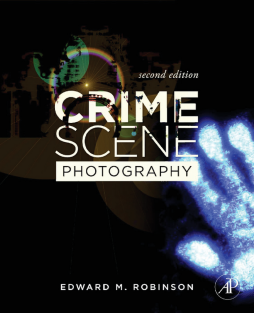
Additional Information
Book Details
Abstract
Crime Scene Photography, Second Edition, offers an introduction to the basic concepts of forensic picture-taking. The forensic photographer, or more specifically the crime scene photographer, must know how to create an acceptable image that is capable of withstanding challenges in court. The photographic theory and principles have to be well grounded in the physics of optics, the how-to recommendations have to work, and the end result must be admissible in court.
Based on the author's years of experience in the field at both the Arlington County and Baltimore County Police Departments, this book blends the practical functions of crime scene processing with theories of photography to guide the student in acquiring the skills, knowledge, and ability to render reliable evidence.
This text has been carefully constructed for ease of use and effectiveness in training and was class-tested by the author at George Washington University.
Beginning August 2008, this book will be required reading by the IAI Crime Scene Certification Board for all levels of certification (through August 2011).
- Over 600 full color photographs
- Two new chapters on 'The History of Forensic Photography,' and 'Digital Image Processing of Evidentiary Photography'
- An essential reference for crime scene photography, including topics such as Composition, the Inverse Square Law, Court Cases affecting photography, Digital Image Processing, and Photogrammetry
- Required reading by the Crime Scene Certification Board of the International Association for Identification (IAI) for all levels of certification
"[The book] addresses a technically sensitive practice with great accuracy. The writing is concise and easy to understand... The content is well organized and, fittingly, uses ample photographs as examples of both correct and incorrect ways to employ various photographic techniques. Specific topics discussed range from filters, flash, and focus to evidentiary concerns and court presentations. An excellent table of contents and index make finding specific content a breeze…. The text is written primarily for a law enforcement audience. This solid text would serve nicely, however, for security professionals who may need to document accidents, potential hazards, crimes, or property loss. It is an excellent reference and would serve both a novice and experienced photographer."--Security Management Magazine
